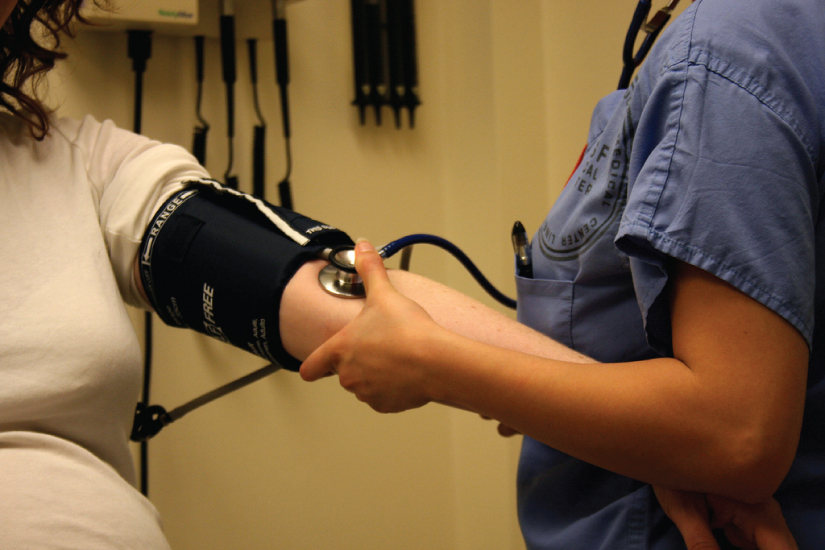
1.1 An introduction to the human body Read Online
1.2 The chemical level of organization Read Online

After studying this chapter, you will be able to:
Though you may approach a course in anatomy and physiology strictly as a requirement for your field of study, the knowledge you gain in this course will serve you well in many aspects of your life. An understanding of anatomy and physiology is not only fundamental to any career in the health professions, but it can also benefit your own health. Familiarity with the human body can help you make healthful choices and prompt you to take appropriate action when signs of illness arise. Your knowledge in this field will help you understand news about nutrition, medications, medical devices, and procedures and help you understand genetic or infectious diseases. At some point, everyone will have a problem with some aspect of his or her body and your knowledge can help you to be a better parent, spouse, partner, friend, colleague, or caregiver.
This chapter begins with an overview of anatomy and physiology and a preview of the body regions and functions. It then covers the characteristics of life and how the body works to maintain stable conditions. It introduces a set of standard terms for body structures and for planes and positions in the body that will serve as a foundation for more comprehensive information covered later in the text. It ends with examples of medical imaging used to see inside the living body.
Question: How long does it take to disinfect a noncritical item?
Choices:
10 minutes or less
20 minutes or more
30-60 seconds
At least 1 minute
Question: Which among the following statements speaks of the germicidal characteristic of alcohol
Choices:
Both ethyl and isopropyl alcohols are bacteriostatic against vegetative spores of bacteria
Optimal bactericidal activity is achieved in the range of 60-90% solutions
In cases of emergency, it is used to sterilize medical and surgical materials
bactericidal activity is maintained when diluted below 50%
Question: Elements of airborne precaution:
Choices:
Negative-pressure room, doors kept closed, N95 mask for those entering the room, surgical mask on patient when transport is required
Negative-pressure room, doors kept closed, N95 mask for those entering the room, N95 mask on patient if transport out the room is required
Negative-pressure room, doors kept closed surgical mask for those entering the room, N95 mask on patient if transport out of room is required
Negative-pressure room, door may be kept open, N95 mask for those entering the room, surgical mask on patient if transport out of room is required
Question: TRUE statement regarding hand hygiene:
Choices:
Washing with soap and water is the recommended agent for hand-hygiene in the healthcare setting
Resident flora on the skin are easily removed by handwashing
Coagulase-negative staph is an example of transient flora that is also an important cause of HAI.
Soap and water id preferred when caring for patients with C. difficile infection
Question: A 23 year-old male balikbayan nurse working in Canada entered the Emergency Room with history of cough for the past 4-5 days and chilly sensation. He related a trip to Qatar a month ago. What personal protective equipment do you need before entering his room?
Choices:
surgical mask and gown
surgical mask, gloves, gown
N95 mask, gloves, gown
N95 mask, gloves, gown and eye protection
Question: After a major operation at the operating room theatre, the housekeeper had to clean a large spillage of blood. What is the proper dilution of sodium hypochlorite for disinfection?
Choices:
1:100
1:1000
1:10
1:1
Question: You were requested to help in the clean-up after an ACLS activity of the hospital. What is the proper procedure in decontaminating CPR mannequins?
Choices:
Wipe the entire external surface of the mannequin with 70% isopropyl alcohol
Use 500 ppm of chlorine and leave for 10 minutes
Spray the entire surface with 2% gluteraldehyde and leave for 20 mins to dry
A 30-60 seconds contact time using 1.4% hydrogen peroxide is enough for decontamination
Question: You are the nurse-in-charge of the newly admitted patient with disseminated zoster. What is the necessary transmission-based precaution to observe for this patient?
Choices:
airborne only
droplet only
contact and droplet precautions
contact and airborne precautions
Question: Routine reprocessing of endoscopes are done in your institution. As a fellow-in-training in infectious diseases you were task to talk on proper disinfection of endoscopes. Which among the following statements best describe the procedure in reprocessing?
Choices:
Cleaning both the internal and external surfaces using water and enzymatic cleaner then immersing the endoscope for 20 minutes in 2% gluteraldehyde then rinsed with tap water
Immediately immersing the endoscope in 2% gluteraldehyde for 20 minutes at 20C
Cleaning the external surfaces using water and enzymatic cleaner then immersing the endoscope for at least 5-10 minutes in 4% gluteraldehyde then rinsed with sterile or filtered water
Immersing the endoscope for 10 minutes or less, using 2% gluteraldehyde
Question: Your patient is on airborne precaution and will undergo ultrasound-guided thoracentesis. How will you advise the nurse attendant who will transport him?
Choices:
N95 mask on the patient during transport out the room as well as accompanying personnel
Surgical mask on the patient during transport out the room
Surgical mask on the patient, N95 mask for the accompanying personnel
N95 mask on the patient, surgical mask for the accompanying personnel